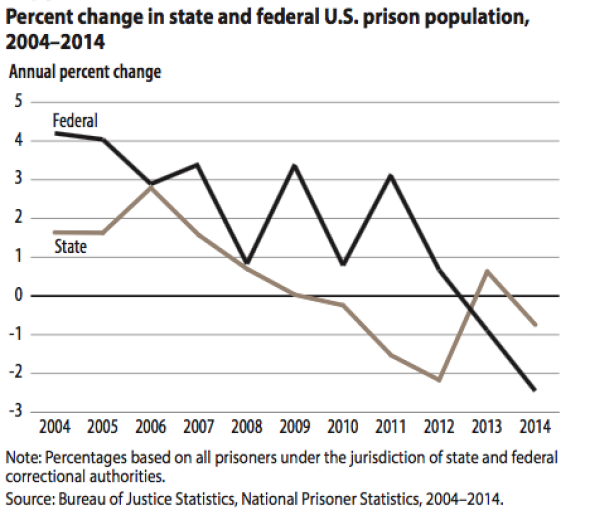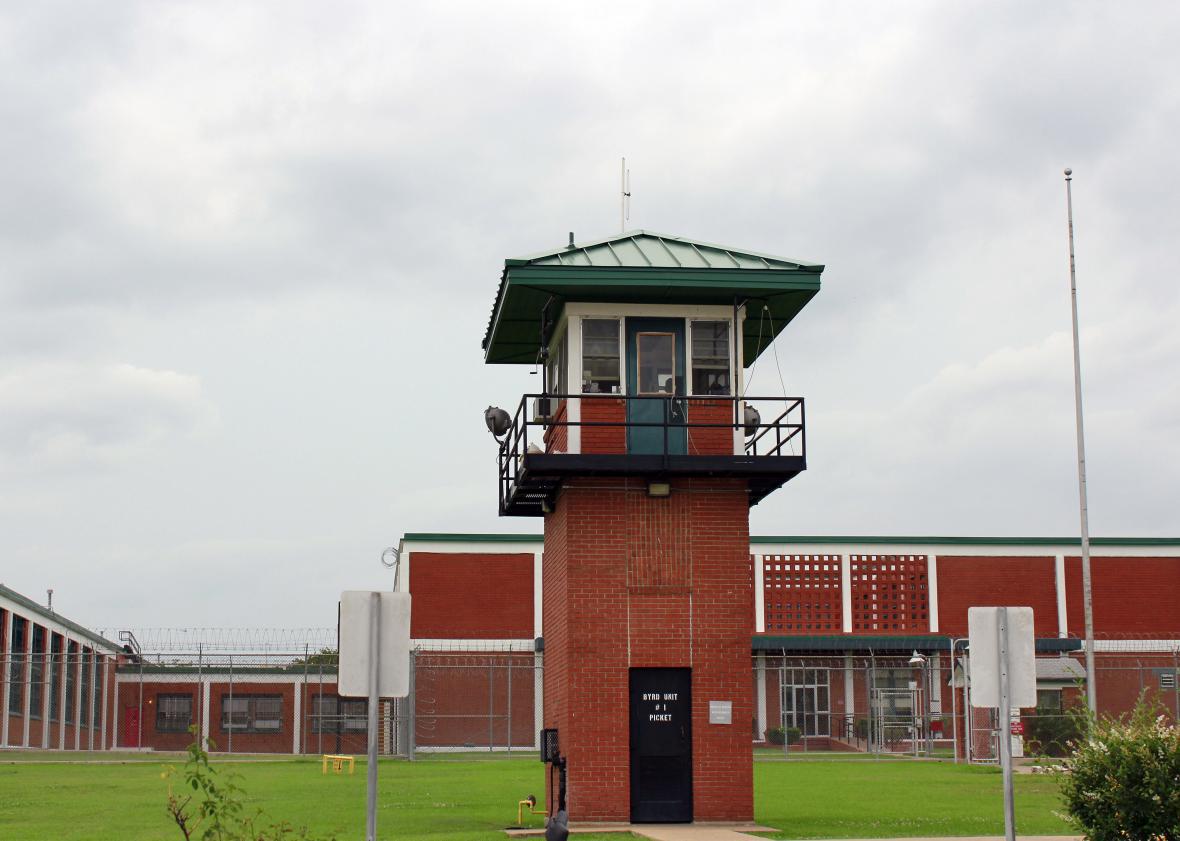The country’s prison population fell by 1 percent during 2014, a decrease of about 15,400 people, according to new numbers released today by the Bureau of Justice Statistics.
The new report places the total number of state and federal prisoners in the U.S. at about 1.56 million, its lowest point since 2005. The year-to-year change is consistent with a modest but steady decline in the prison population that began in 2009, but was interrupted in 2013, when the total number of prisoners went up by about 6,600.*

Bureau of Justice Statistics
Depressingly enough, the 15,400-person decrease in the overall prison population represents the second biggest annual drop we’ve seen in 35 years. (The biggest happened between 2011 and 2012, after California enacted a monumental new policy that transferred thousands of state prisoners to local jails.)
According to the report, about a third of the decrease can be chalked up to the federal prison system—which, after shrinking by about 5,300 inmates in 2014, now houses about 13 percent of the country’s prisoners. The states, which house the vast majority of the rest, saw their collective prison population drop by about 10,000. (Local jails, at last count, housed an additional 744,600 people, and are not included in these calculations.)
The biggest outlier among the states is Mississippi, which saw its prison population drop by 14.5 percent, thanks to “new policies that encourage supervision of nonviolent offenders in the community instead of in prison,” the BJS report says.
Notably, the three states that saw the biggest increases in their prison population—North Dakota jumped by 9 percent, Nebraska by 8.3 percent, and Hawaii by 4.2 percent—are small ones, where it doesn’t take much to move the needle by a lot.
Contrary to the messaging we’ve been seeing from politicians interested in criminal justice reform, more than half—about 53.2 percent—of the people serving time in state prisons were there because of violent offenses, and only about 15.7 percent were there primarily because of nonviolent drug crimes. In the federal system this was reversed: about 50 percent of federal prisoners were doing time on nonviolent drug charges, and about 7.3 percent were there for violent crimes.
According to the BJS report, the incarceration rate among U.S. adults has now fallen from 621 per 100,000 to 612, which is still enough to give America the dubious honor of imprisoning more of its people than any other developed nation in the world.
Correction, Sept. 17 2015: This post originally misstated the year when the prison population saw a bump. It was 2013, not 2014.
